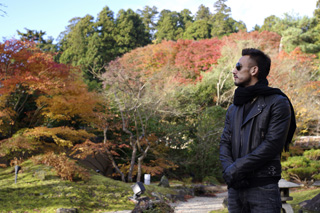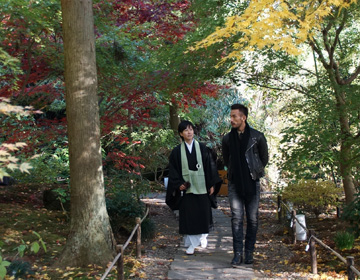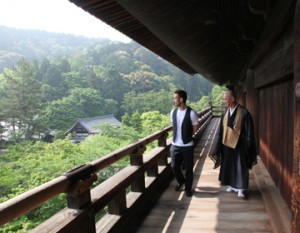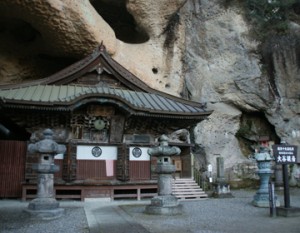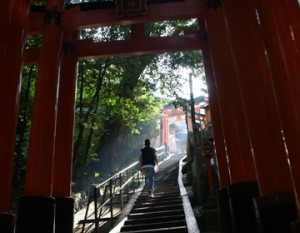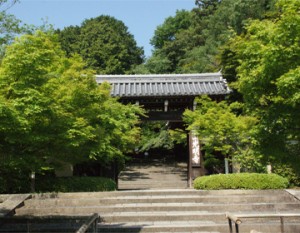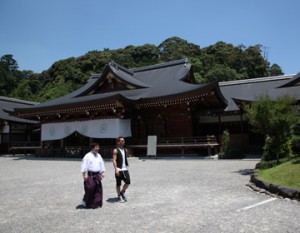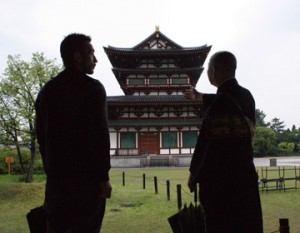The mausoleum of Mitsumune Date, the grandson of Masamune Date.
Entsu-in is situated next to Zuiganji Temple, the family temple of Masamune Date. Mitsumune Date, the grandson of Masamune Date and great grandson of Ieyasu Tokugawa died at the age of 19, and a mausoleum ”Sankeiden” was built, and established as a memorial temple in the 4th year of Shoho (1647). ”Sankeiden” was built with all the craftsmanship of the Date clan and is designated a National Important Cultural Property,
Today, it is open to public for worship, but in it has a history of being closed for three centuries.
On the grounds of the temple, Daihitei (Great Sadness Cottage), once a summer cottage in Edo, a place Mitsumune was attached to, has been relocated from Edo to enshrine the statue of Seikannon Bosatsu.
”The sorrow of his father, Tadamune Date, must have been great indeed. In his great sadness, he moved this summer cottage all the way from Edo, in memory of his son.” says Haruka Amano, the deputy chief priest of Entsu-in. In front of Daihitei is a heart shaped pond, and a garden which represents Mount Hodaraku, a legendary mountain where Bosatsu Kannon is believed to have lived.
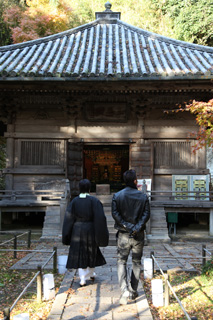
“Foreign culture” expressed in the mausoleum
Nakata was allowed to visit the inside of Sankeiden.
”Please look at the doors of the shrine. There are drawings of western daffodils and roses.” Indeed, there were beautiful pictures. The flowers from the west, such as daffodils and roses, were very rare during the Edo period. In the years of Keicho, the Date clan sent Tsunenaga Hasekura as a delegate to Europe, in an attempt to start direct diplomatic relationships with foreign countries. Hasekura succeeded in securing an audience with the King of Spain and the Pope, but he returned to Japan without much success. When he returned, Japan had already decided on national policy of isolation.
”In the age of national isolation, it was compulsory to give up any goods brought from foreign countries to the central government. It is believed that the Date clan wished to preserve the foreign culture they so painstakingly acquired, in this mausoleum. ” The central government would have never thought that the cultures of the west would be drawn inside a shrine. It is decorated also with other western designs including hearts, diamonds, spades, and clubs.
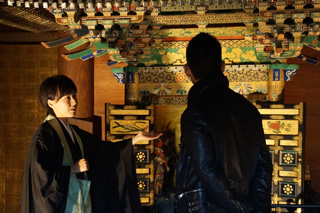
Taking a walk in the beautiful gardens
On visiting Entsu-in, Nakata couldn’t help stopping to look at the beautiful gardens. Within the temple grounds, there are four gardens, and many visitors come here to see the stone garden which represents the Seven Gods of Happiness, and the rose garden.
”There were times when Entsu-in didn’t even have a resident priest and couldn’t maintain the temple. These gardens used to be vegetable patches during the war. We tended to the gardens, and little by little, they have come to the present state.” said Amano.
Tender green of new leaves in the spring, the lush trees and colorful flowers in the summer, red maple tree leaves and lighted night scenery in autumn – the gardens show different aspects each season, and give visitors much pleasure.
